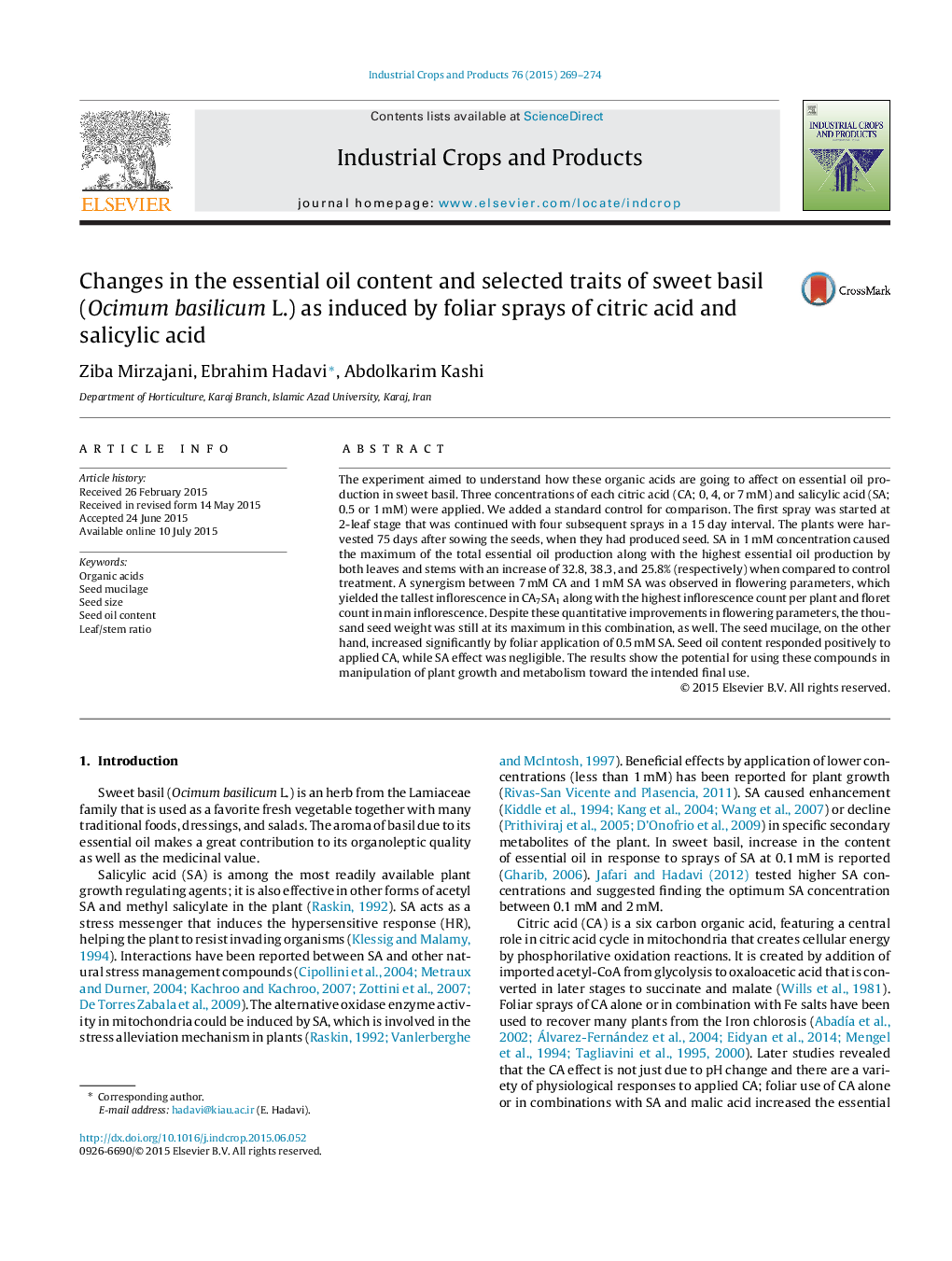| Article ID | Journal | Published Year | Pages | File Type |
|---|---|---|---|---|
| 6375575 | Industrial Crops and Products | 2015 | 6 Pages |
â¢We achieved a 2.5 fold increase in essential oil yield by application of 1 mM salicylic acid.â¢The flowering and seed parameters of basil were significantly enhanced by some treatments.â¢The mucilage content increased significantly by foliar spray of 0.5 mM salicylic acid.
The experiment aimed to understand how these organic acids are going to affect on essential oil production in sweet basil. Three concentrations of each citric acid (CA; 0, 4, or 7Â mM) and salicylic acid (SA; 0.5 or 1Â mM) were applied. We added a standard control for comparison. The first spray was started at 2-leaf stage that was continued with four subsequent sprays in a 15 day interval. The plants were harvested 75 days after sowing the seeds, when they had produced seed. SA in 1Â mM concentration caused the maximum of the total essential oil production along with the highest essential oil production by both leaves and stems with an increase of 32.8, 38.3, and 25.8% (respectively) when compared to control treatment. A synergism between 7Â mM CA and 1Â mM SA was observed in flowering parameters, which yielded the tallest inflorescence in CA7SA1 along with the highest inflorescence count per plant and floret count in main inflorescence. Despite these quantitative improvements in flowering parameters, the thousand seed weight was still at its maximum in this combination, as well. The seed mucilage, on the other hand, increased significantly by foliar application of 0.5Â mM SA. Seed oil content responded positively to applied CA, while SA effect was negligible. The results show the potential for using these compounds in manipulation of plant growth and metabolism toward the intended final use.
